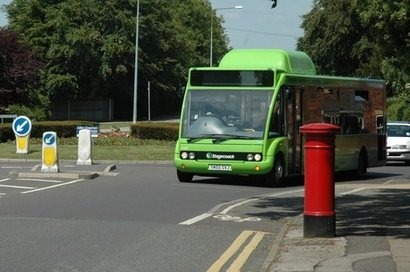
Transport is responsible for nearly 25 percent of the greenhouse-gas (GHG) emissions in Europe and is the main cause of pollution in European cities. The European Union (EU) embarked long ago on the path towards a greener and healthier environment, aiming to reduce GHG emissions by 40 percent by 2030 and by 80-95 percent by 2050. These objectives will remain out of reach, given the measures implemented so far. The transport sector is vital to the EU's efforts to reduce the carbon footprint and the EESC has already called for a U-turn in transport policy. However, a recent EU strategy released last year, entitled A European Strategy for Low-Emission Mobility (July 2016) does not go far enough according to the EESC.
Through its expert opinions, the EESC ensures that EU policy making is more representative and genuinely reflects the interests and needs of all European citizens.
In a recent opinion entitled Decarbonisation of the transport, the EESC takes a firm stance on this strategy. The Committee widely supports it and particularly welcomes its holistic approach, which provides coherence between transport and other policy sectors, including developing the electricity market, promoting new transport solutions and encouraging research and innovation, etc. For the EESC, however, it does not go far enough.
“We regret that this approach has not been taken further” said Stefan Back, the opinion rapporteur, who referred to synergies between opening up markets and efficiency. “The prospects of the digital economy and mobility, the circular and the sharing economy should also have been linked to transport patterns in order to anticipate potential effects, particularly social implications.”
As transport is on the brink of a paradigm change, the EESC considers it essential to link the strategy to all policies affecting and being affected by this change. Another point of criticism is the Commission's silence on improved rules on market access in road haulage and on the improved energy efficiency enabled by the European Modular System for vehicle combinations. This leaves out an element of transport market regulation where there is considerable room for improving the functioning of the market and developing a more energy- and resource-efficient transport system. Regarding efficiency-enhancing measures, the EESC stresses that measures require flexibility in order to be adapted to different environments.
The review of the Eurovignette directive also needs to ensure fair competition between transport modes - something which can only be achieved if there is a level playing field regarding infrastructure charges and external costs. The fact that the European Electronic Tolling Service (EETS), although decided upon in 2004, has not been implemented yet does not only call for its relaunch but for the review of the entire system in order to overcome the obstacles which have hindered its implementation. There is a need for true cost transparency in transport.
For the EESC it is also important to implement measures in agreement with civil society. According to Mr Back, civil society and citizens are the main drivers towards the zero-emission society. It is important to take them on board and there is a need for a genuine participatory dialogue at national level.
Despite these criticisms, the EESC has reiterated its support for the aims of the White Paper. In order to improve resource efficiency and reduce emissions it is important to finally complete the internal transport market. This must be achieved through clear and enforceable rules and accompanied by measures to fight all forms of social dumping as well as fraud and abuse regarding posting of workers and access to welfare benefits.
For additional information:

